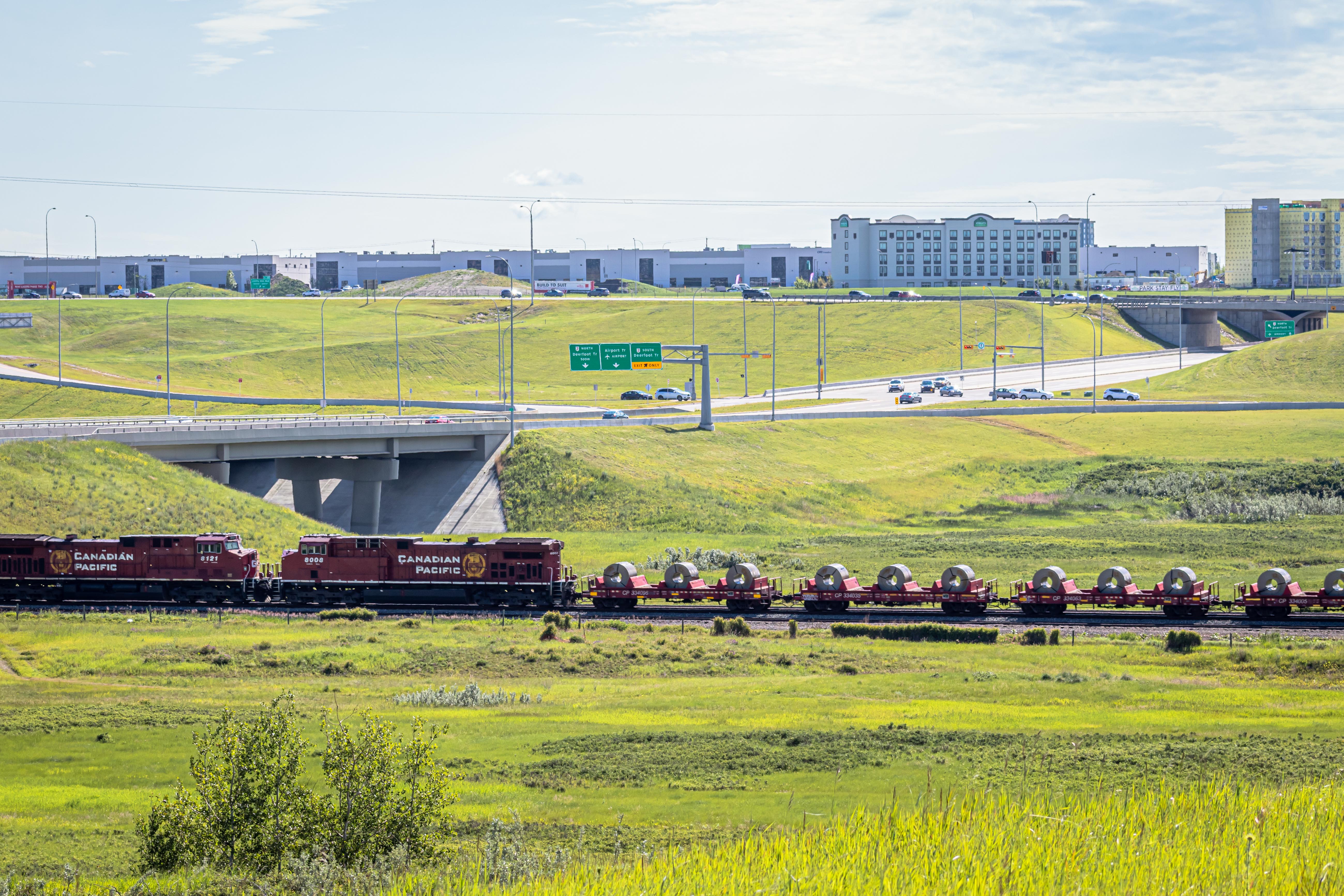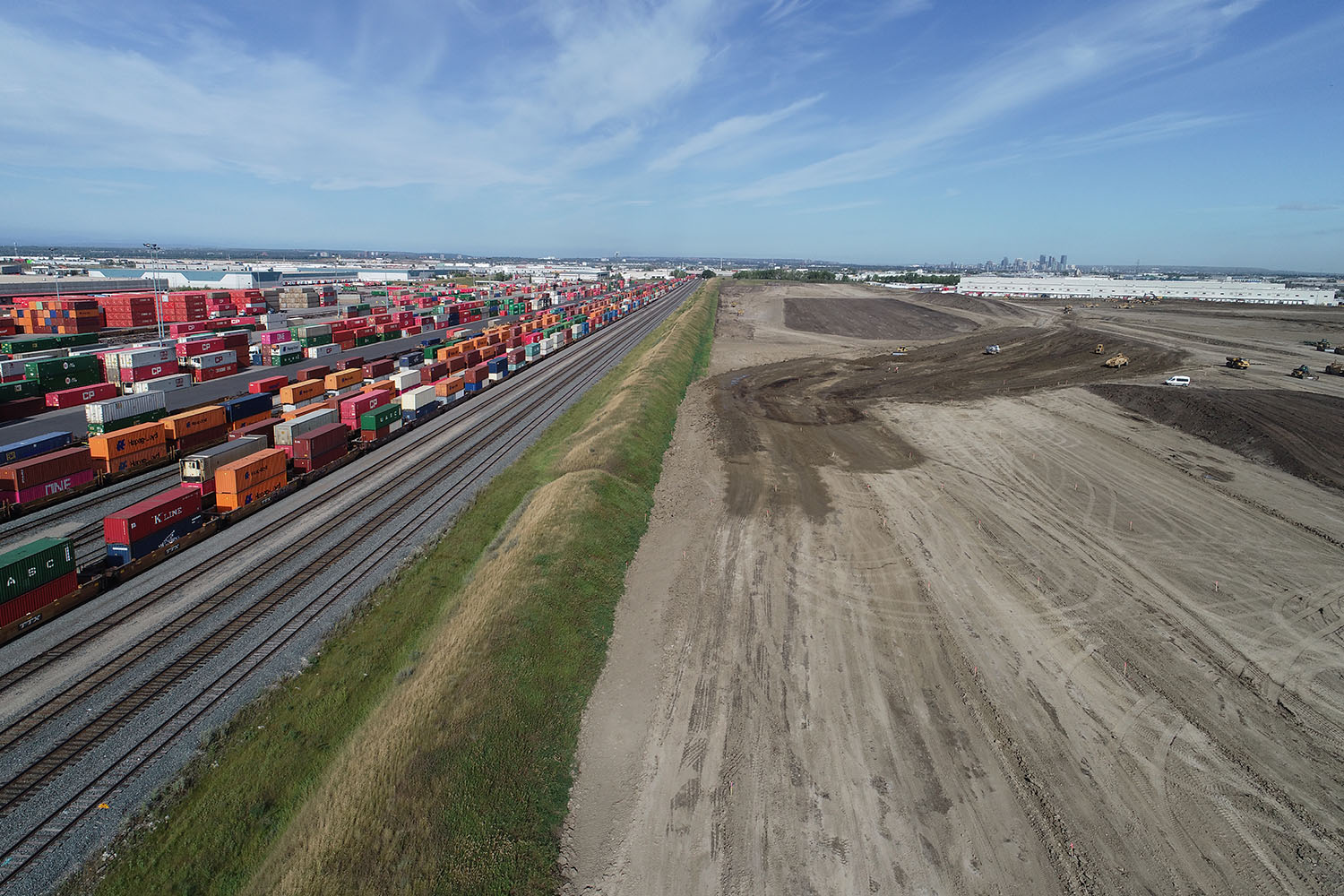Citywide Growth Strategy: Industrial
On this page
What's new
- Citywide Growth Strategy: Industrial Action Plan (IP2025-0538)
Approved by Council on June 24, 2025, the Action Plan presents a strategic framework to strengthen Calgary’s industrial sector. It focuses on enhancing land development, attracting investment, and advancing the Prairie Economic Gateway. The Action Plan endeavours to focus industrial development in the most strategic areas in the city, while contemplating housing and mixed use in peripheral industrial areas where it makes sense to do so.
About the Industrial Action Plan
Calgary’s industrial impact
Jobs for thousands: over 66,000 people work in Calgary’s industrial sector. That’s 11% of all jobs in the city.
Goods that keep life moving: from groceries to construction materials, industrial areas help move the goods that power our daily lives.
Major tax contributors: industrial lands generate $300 million in tax revenue each year, which is 22% of Calgary’s total. This helps keep residential taxes lower and funds the services we all rely on.
Smart, sustainable growth: by planning ahead, Calgary is making industrial development more efficient, affordable, and environmentally responsible.
The Industrial Action Plan, part of The City of Calgary’s Citywide Growth Strategy, aims to boost economic competitiveness by enabling industrial development. A strong industrial sector supports jobs, services, and tax revenue, contributing to long-term economic resilience as Calgary grows toward 2 million residents. The Action Plan leverages Calgary’s locational strengths—goods movement networks, workforce access, and infrastructure—to enhance industrial appeal. It aligns with the Prairie Economic Gateway vision and seeks to balance industrial land supply, housing and mixed-use opportunities in a regional market.
How it was developed
In 2016, the Industrial Strategy Working Group was created. Its goal is to improve Calgary's industrial sector. It aims to make Calgary more competitive in industrial markets.
The group includes members from the City of Calgary, industry associations, landowners, developers, and Calgary Economic Development. It also has consultants, industrial brokers, and the Calgary Airport Authority. They all work together to guide the strategy and Action Plan.
Why it matters now
As Calgary’s population grows, the demand for jobs, services, and infrastructure will increase. The Industrial Action Plan helps ensure the city is ready to meet that demand by supporting a strong, diverse economy. It enables Calgary to attract new businesses, create employment opportunities, and maintain a stable tax base—key ingredients for a thriving, future-ready city.

Strategic initiatives: building Calgary’s industrial future
The Prairie Economic Gateway (“Gateway”)The Prairie Economic Gateway (“Gateway”) initiative is a first-of-its-kind collaboration between The City of Calgary and Rocky View County. This initiative will strengthen rail, land, and air transport services to help move people and goods more efficiently. The core of the Gateway will be an industrial park with direct rail access. This access will provide a westward link to Canada’s leading maritime terminal and an eastward link through the Canadian Prairies and into the rest of the continent.
Learn more about The Prairie Economic GatewayDeveloper toolkit
Calgary is open for business and we’re making it easier than ever for industrial developers to succeed. Our strengths include:
- Direct access to major highways and rail lines.
- Proximity to Calgary International Airport.
- Skilled workforce and modern infrastructure.
- Ready-to-develop industrial land.

Whether you're building a logistics hub, manufacturing facility, or warehouse, here’s how to get started:
Find the right land
Browse available sites
Find the right land
Browse available sites
Calgary offers a range of pre-serviced and strategically located industrial lands ready for development. Whether you're looking for large parcels, proximity to major roads, or access to rail, we’ve got options to suit your needs.
Explore available sites:
Use the interactive industrial land map to view zoning, infrastructure, and development stages across Calgary’s industrial areas.
Understand the rules
Check zoning information
Understand the rules
Check zoning information
Calgary’s Land Use Bylaw (LUB) and Municipal Development Plan (MDP) guide how industrial land can be used and developed. Recent updates have made it easier and faster to build.
Key updates include:
- More permitted uses in the General Industrial (I-G) district.
- Height limits removed for most I-G parcels.
- Simplified change-of-use approvals in I-B, I-C, and I-G districts.
- “General Industrial – Light” now permitted in I-B.
- “Vehicle Rental – Minor” added as a discretionary use in I-G and I-R.
Plan for growth
Long-term planning tools
Plan for growth
Long-term planning tools
Calgary’s strategic planning documents support industrial development and future growth.
- Calgary’s Municipal Development Plan: Calgary’s 60-year vision for growth to 2 million residents, aligned with the Calgary Transportation Plan.
- Learn more in Sec 2.1.2 of the Municipal Development Plan.
- Industrial Area Structure Plans (ASPs): Guide development in key industrial areas (Northeast, Nose Creek, Shepard, Southeast 68 Street, Southeast, and Stoney).
- Recent ASP amendments improve flexibility for:
- Development density.
- Medium industrial uses near entranceway roads.
- Local commercial uses in Saddle Ridge.
- Land use and transportation map alignment.
- Application process efficiency.
- Explore ASPs in the Planning & Development Resource Library
Use pre-serviced sites
Build faster on ready land
Use pre-serviced sites
Build faster on ready land
Pre-servicing allows developers to install water and sewer lines before roads are paved. This change:
- Reduces costs and construction delays.
- Prevents damage to new roads.
- Speeds up project timelines.
- Minimizes disruptions to nearby businesses.
This improvement was made in response to developer feedback and is now part of Calgary’s standard industrial development process.
Use flexible zoning
Try Direct Control Districts
Use flexible zoning
Try Direct Control Districts
The Direct Control District (DC) is a flexible zoning option that combines the benefits of three industrial zones (I-G, I-B, I-C). It’s designed to:
- Allow more business types.
- Reduce the need for land use changes.
- Speed up approvals.
| Where it applies: | Where it doesn't apply: | ||
|---|---|---|---|
| Vacant industrial land. | Already developed or in-use areas (e.g., Greenview, Manchester). | ||
| Parcels near arterial and industrial arterial roads. |
Get permits
Apply to build
Get permits
Apply to build
Calgary has streamlined the permitting process to help you get started faster.
What you may need:
Explore resources and permit guides: Planning & Development Resource Library.
What's next
To continue driving Calgary’s industrial growth, The City is actively advancing key initiatives that build on recent progress in reducing barriers and streamlining development. We are committed to unlocking the full potential of Calgary’s industrial lands through:
- Investing in infrastructure to expand servicing and improve transportation access.
- Accelerating land readiness to bring more industrial parcels to market faster.
- Enhancing planning and permitting resources to ensure timely and predictable approvals.
- Strengthening partnerships with industry and government to align efforts and support long-term growth.
These efforts are already underway and will help Calgary attract new businesses, create jobs, and maintain a strong and stable tax base—benefiting all Calgarians by supporting a resilient and diverse economy.

Industrial land map
Use the interactive map below to view available parcels, zoning, infrastructure, and development stages across Calgary’s industrial areas.
Documents and references
Industrial Area Growth Strategy Consulting Reports
Infrastructure and land development
Infrastructure and servicing investments
- Glenmore Trail/68 Street S.E intersection improvements
- Airport Trail N.E. – Phase 2
- Capital Works map
- City Building Program
- City Building Phase 4 | Zoning Bylaw information
- Off-site Levy
Public lands
Business and industry support
Business resources
Business friendly environment
Industry associations
Planning and policy framework
Strategy documents and reports
Transportation and mobility
Assessment and taxation
Timeline - Council decisions
| Date | Update | Details |
|---|---|---|
| June 24, 2025 | Industrial Action Plan (IP2025-0538) approved |
Citywide Growth Strategy: Industrial Action Plan (IP2025-0538), Item 7.4, approved by Council. |
| June 4, 2025 | Industrial Action Plan (IP2025-0538) presented |
Citywide Growth Strategy: Industrial Action Plan (IP2025-0538) presented at Infrastructure and Planning Committee (Item 7.1). |
| July 16, 2024 | Targeted amendments approved |
Citywide Growth Strategy: Targeted Amendments to Existing Industrial Area Structure Plans, IP2024-0587 (Item 7.3.1.) approved by Council. |
| June 12, 2024 | Targeted amendments presented |
Targeted Amendments to Existing Area Structure Plans presented at Infrastructure and Planning Committee (Item 7.2). |
| June 6, 2023 | Industrial Action Plan approved |
Citywide Growth Strategy: 2023 Industrial Action Plan, IP2023-0346 (Item 7.7) was approved by Council. |
| July 26, 2022 | Strategy presented at combined Council meeting |
Citywide Growth Strategy in the 2023-2026 Service Plans and Budgets Cycle (IP2022-0545) at Combined Council meeting. |
| Feb. 15, 2022 | Plan approved |
The 2022 Industrial Action Plan was approved by Council (Item 7.11). |
| March 22, 2021 | Industrial report presented to Council |
Ciywide Growth Strategy: Industrial report to Council (PUD2021-0150). |
| Nov. 18, 2019 | Council provided clarity | Council provided clarity on the process for The Strategy through the 2019 Growth Monitoring Report PFC2019-1062 (Item 7.12, recommendation #8.d). |


